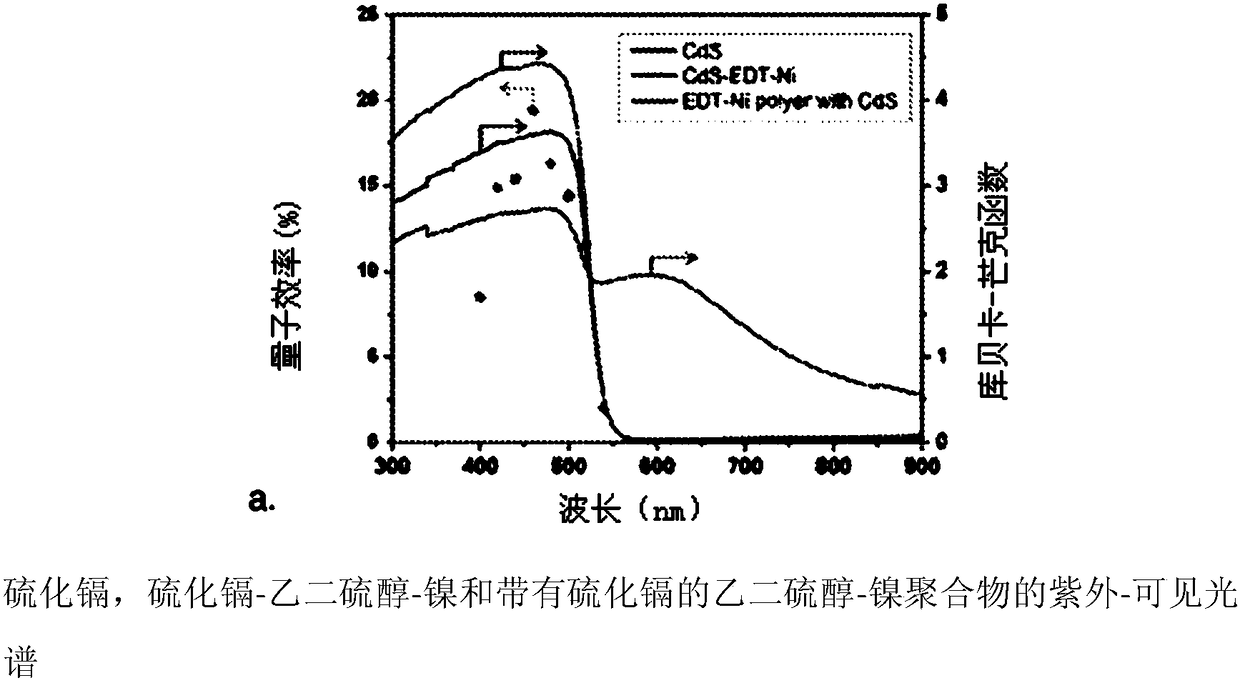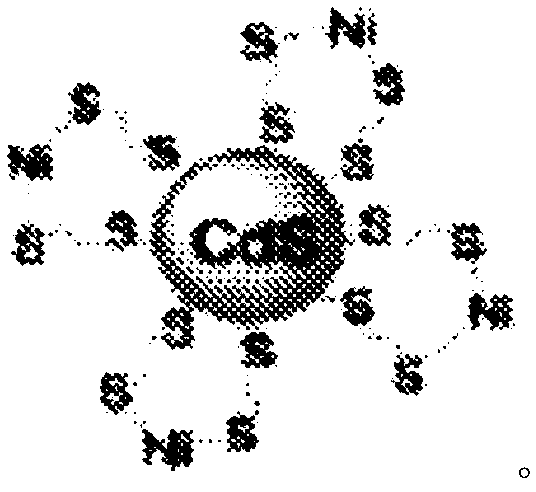Incorporating transition metal-facilitated photocatalytic systems for efficient hydrogen evolution
A transition metal, photocatalyst technology, applied in the direction of metal/metal oxide/metal hydroxide catalyst, organic compound/hydride/coordination complex catalyst, physical/chemical process catalyst, etc., can solve the problem of sulfurous acid gas management High cost, inability to recover hydrogen sulfide energy content, inability to produce hydrogen, etc.
- Summary
- Abstract
- Description
- Claims
- Application Information
AI Technical Summary
Problems solved by technology
Method used
Image
Examples
Embodiment 1
[0039] 1,2-ethanedithiol (EDT) and nickel(II) nitrate hexahydrate (Ni(NO 3 ). 6H 2 O, greater than or equal to 98.5%) is available from Sigma-Aldrich. Sodium sulfide nonahydrate (Na 2 S. 9H 2 O, greater than or equal to 98%) and cadmium acetate dihydrate (Cd(OAc)2.9H2O, greater than or equal to 98%) are available from Acros Organics. All chemicals were used without further purification. The synthesis of cadmium sulfide nanocrystals involves mixing 400 mL of Na2S (0.14 M) aqueous solution and 500 mL of Cd(OAc) 2 (0.14M) aqueous solutions were mixed together and mixing occurred with good stirring. After stirring for approximately 24 hours, the solution was filtered to obtain a solid, which was washed with deionized water. This cleaning process is repeated several times. The obtained yellow solid was then dispersed in 100 mL of deionized water, and then transferred to a polytetrafluoroethylene-lined stainless steel autoclave for hydrothermal treatment. After being heate...
PUM
 Login to View More
Login to View More Abstract
Description
Claims
Application Information
 Login to View More
Login to View More - R&D
- Intellectual Property
- Life Sciences
- Materials
- Tech Scout
- Unparalleled Data Quality
- Higher Quality Content
- 60% Fewer Hallucinations
Browse by: Latest US Patents, China's latest patents, Technical Efficacy Thesaurus, Application Domain, Technology Topic, Popular Technical Reports.
© 2025 PatSnap. All rights reserved.Legal|Privacy policy|Modern Slavery Act Transparency Statement|Sitemap|About US| Contact US: help@patsnap.com



